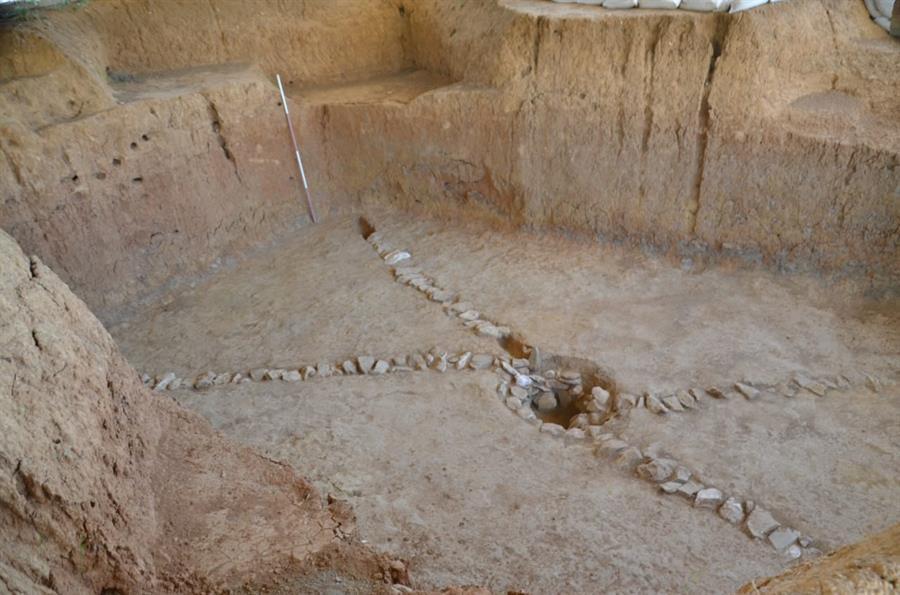Ancient grain silo found in Şapinuva
ÇORUM

A 3,500-year-old grain silo has come to light during the archaeological excavations carried out in the Central Anatolian province of Çorum's Şapinuva, which was once the capital of the Hittite Empire and one of the most important religious and military centers.
The silo, which has been unearthed in the region called the Workshops District in the Şapinuva ruins, draws attention as it was built on natural soil. Unlike the grain silos in other Hittite cities, the silo was built by being carved into the soil instead of stone at the bottom, while there are channels and a leak well to prevent the grains from getting wet.
Professor Önder İpek, the head of the excavations from Hitit University Archeology Department, pointed out that two separate workshop structures were unearthed during the excavations carried out by Aygül Süel in 2014 and said that the workshop structures were among important discoveries in terms of learning the mining technology in the Hittite era.
İpek said that crucibles, molds and some metal tools, which are important evidence of mining technology, were found in the workshop, too.
İpek stated that the excavations in the ancient city, which is divided into two as Ağılönü, where the holy places are located, and the Tepeinter area, where the administrative structure and warehouses are located, were carried out in recent years in an area they call the "G" area, where the workshops are located.
“We continue our work in the area on the west side of the Workshop-1 structure. The reason why this place was called the workshop district is that there are more than one workshop. Considering that there may be another workshop structure in the area we are working on, we continued the excavations in this area. The works that started in the region in 2022 continue this year. However, when we finalized the works, we saw that this area was a grain silo. We know that examples of such silos are also found in Hattusa and Alacahöyük. There are also such wheat or grain silos in other Hittite cities. We also know of the existence of such silos in Kaman Kalehöyük and Kuşaklı Höyük in Sivas. Besides the two silos in Ağılönü found in previous years in Şapinuva, we found such a large silo structure carved into the soil this year,” he said.
İpek also provided information about the features and technical structure of the silo structure, saying, “One of the main features of the silo is that it is made by carving the main soil. The silo is 10x5 meters in size and positioned at 3.40 centimeters deep. Technically, it does not have a stone-floored structure like the silos in Hattusa and Alacahöyük. The floor of the silo consists of earth instead of stone pavement. In addition, as in the Hattusa and Alacahöyük examples, channels, which are covered with flat stones, are opened from four different directions to evacuate the moisture inside the silo. We see this technique in other Hittite cities as well. In addition, we found that the channels are connected to the leakage well with a certain slope. Some soil samples taken from here are also being examined. Which grain is stored here will also be revealed as a result of our examinations.”
















